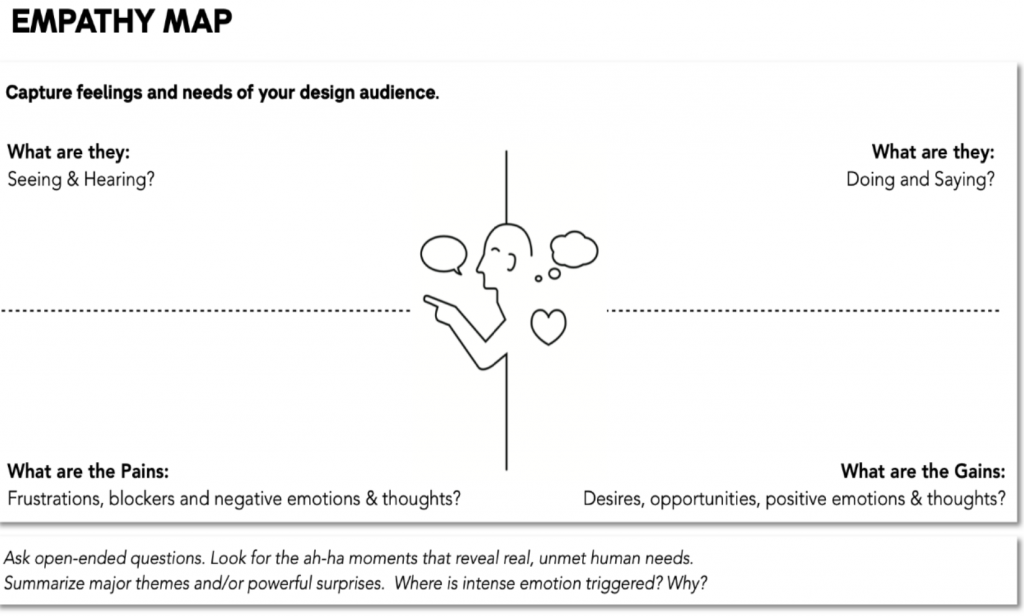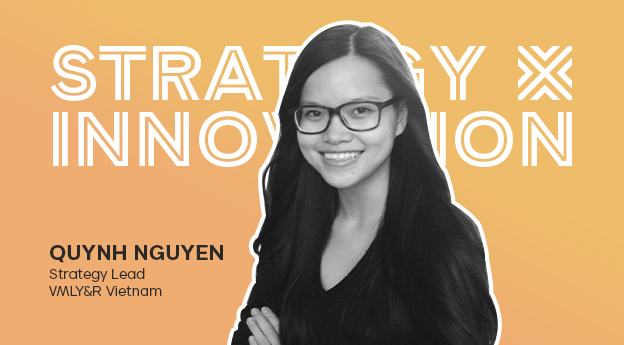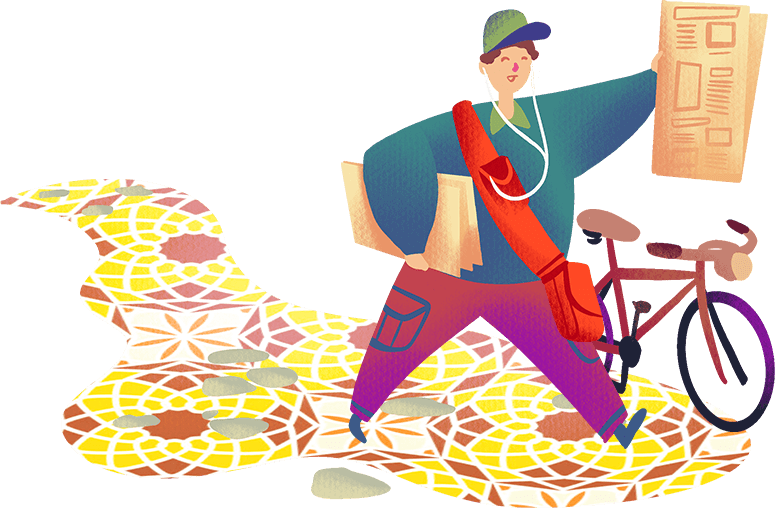Strategy innovation: Mental models to help strategists embrace Renaissance thinking
Instead of just focusing on the job and embracing departmental or specialist thinking, which is good for carrying out the task at hand, strategists can philosophise about deeper issues underlying businesses and people’s lives, and benefit from Renaissance thinking, says VMLY&R Vietnam’s Quynh Nguyen.
- When we think about our job, we embrace departmental thinking or specialist thinking, which is very good for carrying out the tasks at hand.
- But when we “philosophise” or think about deeper issues underlying business or our lives, we can learn to embrace and benefit from Renaissance thinking.
- Empathy is crucial to a human-centred design process such as Design Thinking and empathy helps us set aside our assumptions about the world to gain true insights into people.
- Thinking like an ER doctor with a clear prioritisation checklist will keep our minds focused on the things that matter the most.
Why it matters
Ailsa Bay whisky defies category norms on several levels, from the way it was created to the way it is marketed. The power of this approach has been evident in the year-on-year doubling of volume sales and the brand’s expansion around the world.
Takeaways
- Brands need to find a distinct image and voice that enables them to cut through category clichés.
- Techniques such as (relevant) gamification can increase the length of time people spend with your brand.
- Give people something to think about and encourage them to make a connection to your work.
Renaissance thinking has become a buzzword in marketing. What do we mean when we say Renaissance thinking? Is it rebellious or radical? Is it creative or is it simply human?
Let’s take a look at history
Before the Renaissance, many countries across Europe were suffering from poverty and darkness. Trapped by conformity, people strictly followed rules and practices. Breaking away from this mould, the Renaissance thinkers, artists, culture shapers, adventurers and philosophers began to spread new, explorative and inventive ideas and gained influence.
It was not about adhering to rules – it was about pushing the boundaries of what we knew and what we could achieve.
It was not about manufactured goodness – it was about shake-you-to-the core discovery, humanity, beauty and art.
It was not about being safe – it was about being brave through exploration, navigation, discovery and expeditions that circumnavigated the globe.
So, the question is…
Why are we, whilst living in a time of unprecedented developments in wealth, culture and technology, shying away from these brave acts of exploration, and why are we strategists – the thinkers, the contrarians, the brains of an agency – shying away from making such discoveries and breakthrough inventions?
We tend to forget about our human-ness and focus on our job. When we think about our job, we embrace departmental thinking or specialist thinking, which is very good for carrying out the tasks at hand. But when we “philosophise” or think about deeper issues underlying business or our lives, we can learn to embrace and benefit from Renaissance thinking.
A Renaissance man is defined as…
A man who is knowledgeable or proficient in a variety of fields. In particular, it refers to a person who excels in science and mathematical fields, as well as in the humanities. The most famous was Leonardo da Vinci (1452- 1519), the Italian painter, sculptor, humanist, scientist, architect, philosopher, engineer and more.
Most of us, however, are good at being specialists. We go back and we seek comfort in the familiarity of our disciplines.
- A planner will think about insights.
- A creative person thinks about copy or visuals that work.
- An engineer thinks about systems.
- A doctor thinks about symptoms and causes.
We are good at closely examining the trees but sometimes we don’t see the forests.
In a famous speech and in his autobiography Poor Charlie’s Almanack, American billionaire investor Charlie Munger referred to embracing diversity of mental models in the decision-making process: “Well, the first rule is that you can’t really know anything if you just remember isolated facts and try and bang ’em back. If the facts don’t hang together on a latticework of theory, you don’t have them in a usable form. You’ve got to have models in your head. And you’ve got to array your experience both vicarious and direct on this latticework of models. You may have noticed students who just try to remember and pound back what is remembered. Well, they fail in school and in life. You’ve got to hang experience on a latticework of models in your head.”
It’s the sharing and the cross-pollination of ideas across disciplines that are most likely to lead to a holistic view of the forest and enable us to make better decisions with regard to the forest.
With that in mind, we’ve collected a few mental models that might be helpful for strategists to embrace when it comes to diversity of thinking:
1. Think like a mother: Putting empathy to good use
We are all human and we connect through emotions. As babies, we were biologically wired to seek the comfort and love of our mothers. As adults, we seek to love and give love. We seek to connect and to understand.
Empathy is crucial to a human-centred design process such as Design Thinking and empathy helps us set aside our assumptions about the world to gain true insights into people. An Empathy Map can be a really powerful tool to gain deep, new and fresh insights into our consumers because it helps us see them as human beings.

2. Think like a computer programmer
As American computer scientist Allen B Downey wrote, “The single most important skill for a computer programmer is problem solving. Problem solving means the ability to formulate problems, think creatively about solutions and express a solution clearly and accurately.”
Thinking like a programmer really forces us to strip the ambiguity away and articulate the brief or the problem at hand in a succinct and clear manner. It also fosters agile thinking to focus on providing solutions to the problem.
3. Think like an emergency room doctor
In the emergency room, the loudest patient might not be the most critical one in need of help. A doctor always has to quickly read a situation, have a diagnosis and stick to a clear plan of priorities in his or her head.
Same with our job: sometimes there are many things on our to-do-list but they vary widely in terms of importance. Thinking like an ER doctor with a clear prioritisation checklist will keep our minds focused on the things that matter the most.
4. Think like an economist
Not every economist is created equal! The Lebanese-American essayist and mathematical statistician Nassim Nicholas Taleb introduced the concept of the black swan in his book The Black Swan: The Impact of the Highly Improbable. Black swans are highly improbable events that leave a massive impact and after the fact, we try to rationalise them. In fact, all of us are vulnerable when it comes to black swans.
Take the COVID-19 pandemic for example. No one outside a very niche scientific community could see it coming, calculate its impact and risks, or feel protected from it. Embracing this preparedness for high-risk, highly improbable and unknown events could make us improve our agility and creativity as strategists, who are often relied upon to help brands navigate these unprecedented times.
Conclusion
If we’re looking at the problem through disintegrated lenses, we will come up with disintegrated solutions.
By putting together these mental models in our head, we can walk around more informed, confident and aware, and ready to embrace the diversity of mindsets and skill sets just like people during the Renaissance did to help our clients with their businesses. And those are the key qualities that strategists should aim for.
About the author

Quynh has 10 years of experience working across key brands in different industries and categories including FMCG, food and nutrition, finance, automobile, tech, real estate and hospitality. She is confident navigating traditional, digital and commerce landscapes, with a solid background in developing strategies to create connected brand experiences that bring brands closer to consumers, consumers closer to communities, and communities closer to the wider world.







